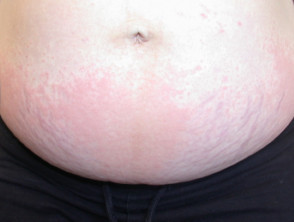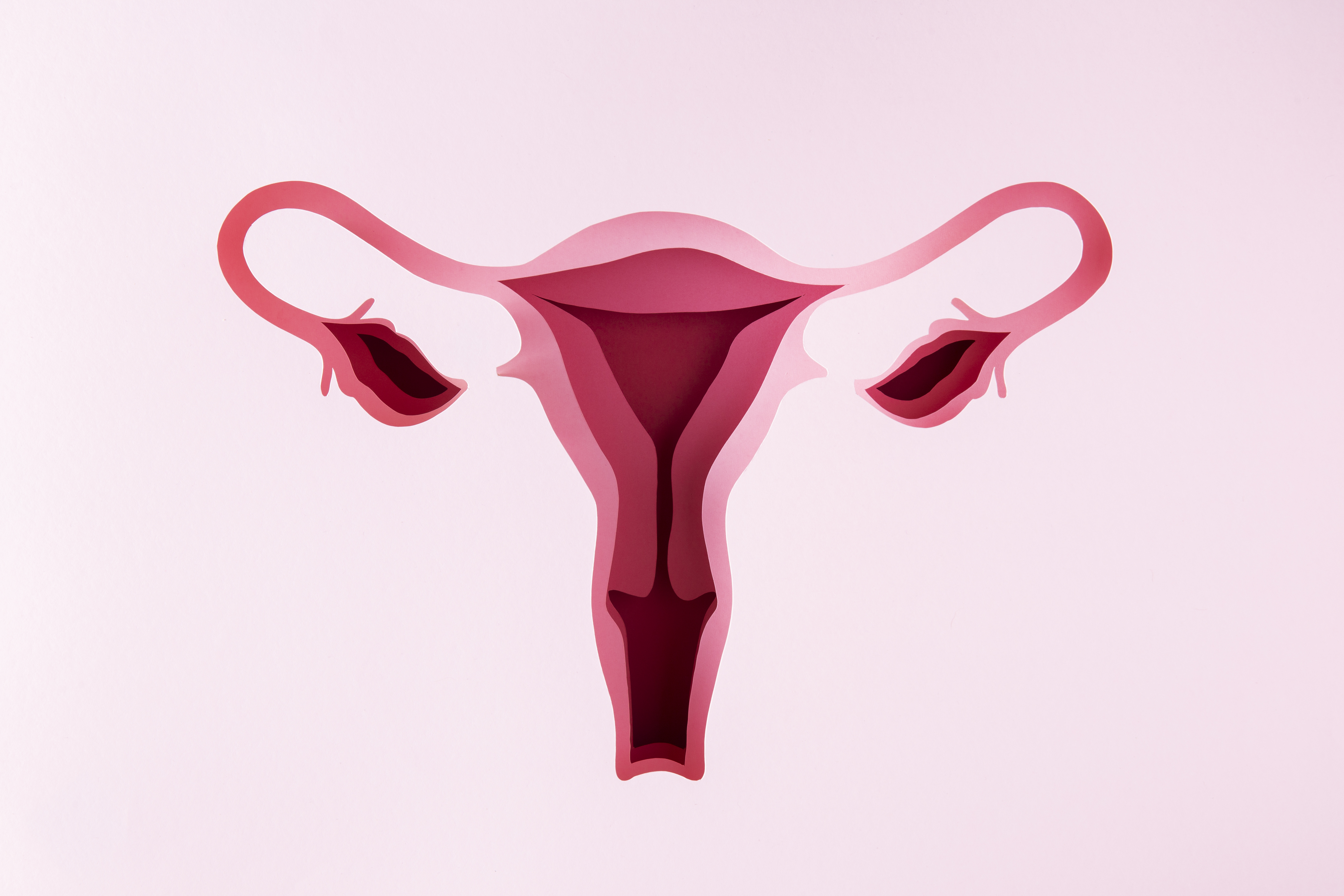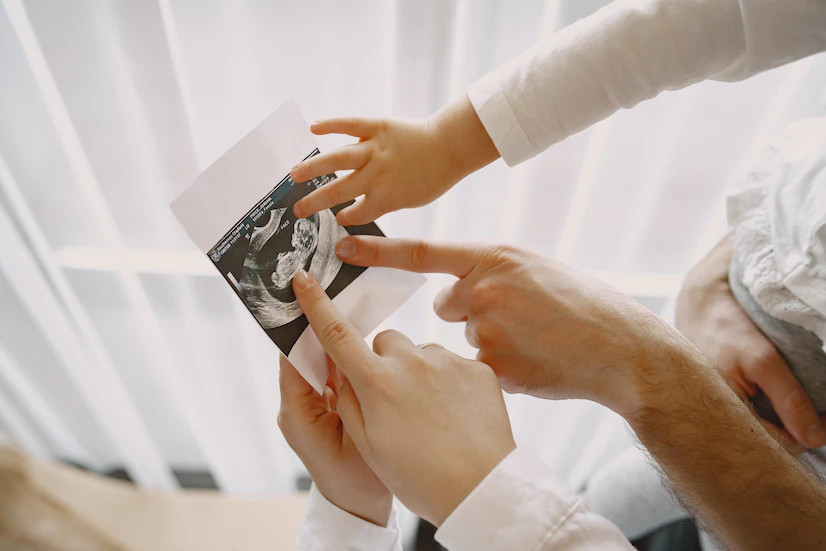Definisi
Erupsi polimorfik kehamilan juga dikenal dengan pruritic urticarial papules and plaques of pregnancy (PUPPP), atau plak dan papul urtikaria yang pruritik. Kondisi ini merupakan penyakit kulit yang sering ditemukan pada akhir trimester tiga pada kehamilan pertama. Penyakit ini menimbulkan tanda berupa ruam bergelombang yang cukup luas di kulit pada perut ibu hamil. Pruritik itu sendiri merujuk pada rasa gatal. Sesuai dengan namanya, penyakit kulit ini terasa sangat gatal dan cukup mengganggu, khususnya pada saat menginjak trimester ketiga kehamilan. Biasanya penyakit berlangsung sepanjang kehamilan hingga ibu melahirkan.
Erupsi polimorfik kehamilan banyak ditemukan dan merupakan masalah kulit yang umum dialami oleh ibu hamil pada kehamilan pertama. Penyakit erupsi polimorfik kehamilan tidak mengganggu pertumbuhan janin. Ibu yang mengalami masalah kulit ini masih tetap dapat menyusui dengan aman. Penyakit ini hanya menimbulkan rasa tidak nyaman dan mengganggu tampilan kulit ibu hamil. Kondisi ini cukup jarang ditemukan berulang, kecuali bila pada kehamilan berikutnya ibu mengandung lebih dari satu janin (kembar).
Penyebab
Penyebab pasti erupsi polimorfik kehamilan hingga saat ini masih belum diketahui secara jelas. Namun, penyebabnya dikaitkan dengan kehamilan. Pada saat hamil, kulit perut ibu mengalami peregangan dan perubahan hormon yang dapat memengaruhi terjadinya penyakit. Peregangan kulit pada ibu hamil dapat memicu reaksi sistem kekebalan tubuh karena adanya kerusakan pada jaringan kulit. Bercak yang ditemukan biasanya berasal dari sekitar permukaan kulit pusar yang paling meregang. Erupsi polimorfik kehamilan lebih sering ditemukan terjadi pada ibu hamil yang mengandung janin lebih dari satu (kembar).
Berdasarkan beberapa penelitian, diketahui bahwa erupsi polimorfik kehamilan diasosiasikan dengan peningkatan berat badan pada ibu hamil, peningkatan berat janin, dan hormon seksual, namun hingga saat ini belum ada penelitian lain yang dapat mengkonfirmasi hal tersebut tersebut.
Faktor Risiko
Erupsi polimorfik kehamilan tidak selalu terjadi pada semua ibu hamil. Diketahui dari 160 kehamilan, hanya ditemukan 1 kasus ibu hamil yang mengalami penyakit kulit ini. Umumnya, erupsi polimorfik kehamilan terjadi pada kehamilan pertama dan jarang ditemukan pada ibu hamil yang sudah pernah melahirkan anak pertamanya. Penyakit ini juga lebih banyak ditemukan pada ibu hamil berkulit putih dan jarang ditemukan pada ibu hamil berkulit gelap.
Erupsi polimorfik kehamilan juga cukup sering ditemukan pada ibu hamil yang mengalami peningkatan berat badan signifikan, terutama pada ibu hamil yang memiliki kehamilan kembar. Diketahui bahwa kehamilan triplet dengan tiga janin memiliki risiko 14% lebih besar untuk mengalami erupsi polimorfik kehamilan dibandingkan kehamilan dengan dua janin, dengan risiko terjadinya penyakit kulit hanya sebesar 2,9%.
Selain itu. terdapat penelitian yang menyatakan bahwa ibu hamil yang mengandung janin laki-laki lebih berisiko mengalami gangguan erupsi polimorfik kehamilan dibandingkan dengan ibu hamil yang mengandung janin perempuan.
Gejala
Gejala klasik yang sering ditemukan pada kasus erupsi polimorfik kehamilan diantaranya adalah munculnya ruam kulit disertai rasa gatal. Ruam kulit ini sering muncul pertama kali di area perut disertai dengan bintik-bintik (papul). Bintik-bintik tersebut tampak menonjol di sepanjang garis striae atau stretch mark di perut. Hal serupa juga dapat ditemukan pada area bokong dan dapat menyebar sepanjang torso serta anggota gerak tubuh.
Ruam kulit beserta bintik-bintik ini dapat membuat kulit terasa bergelombang. Lebih lanjut, warna kulit pada ruam tampak lebih gelap atau kemerahan. Ruam kulit dapat meluar pada torso, perut bagian bawah, di balik lipatan payudara dan pada lipatan-lipatan tubuh. Lenting-lenting kecil yang muncul pada kulit jika digaruk akan mengeluarkan cairan bening, yang bisa menimbulkan bekas cairan yang mengering apabila tidak segera dibersihkan.
Diagnosis
Diagnosis erupsi polimorfik kehamilan biasanya ditegakkan oleh dokter berdasarkan tampilan kulit yang muncul, penyebaran ruam pada kulit, serta riwayat kehamilan pada ibu. Namun, tak jarang gejala yang terlihat pada kulit cukup sulit dibedakan dengan penyakit kulit lain.
Pemeriksaan biopsi kulit jarang dilakukan karena tidak ditemukan gambaran spesifik yang dapat membantu penegakan diagnosis pada pemeriksaan biopsi kulit. Pemeriksaan darah atau urin rutin juga jarang dilakukan karena tidak terdapat perbedaan yang secara signifikan dapat membantu penegakkan diagnosis erupsi polimorfik kehamilan.
Tata Laksana
Hingga saat ini, belum ada terapi yang dapat menyembuhkan atau mencegah terjadinya erupsi polimorfik kehamilan. Dokter biasanya akan memberikan terapi yang digunakan untuk mengendalikan gejala yang muncul dan meringankan gejala yang mengganggu kenyamanan ibu hamil. Pelembab kulit dapat digunakan untuk membantu meredakan gejala yang muncul. Semakin sering digunakan, maka lebih baik.
Selain itu, dokter juga dapat memberikan salep steroid yang dioleskan tipis pada ruam kulit yang terasa gatal, berdasarkan petunjuk dokter. Obat steroid ini bertujuan untuk meredakan peradangan pada kulit. Dokter mungkin juga akan mempertimbangkan pemberian steroid dalam bentuk obat minum pada kasus dengan gejala yang parah. Namun, Anda harus berkonsultasi dengan dokter dan tidak disarankan untuk memulai pengobatan sendiri tanpa pengawasan dokter, karena dokter akan memilih obat yang aman untuk janin Anda. Penggunaan obat penghilang rasa gatal juga dapat dijadikan pilihan terapi yang lebih aman pada kehamilan.
Komplikasi
Komplikasi yang dapat timbul pada penyakit erupsi polimorfik kehamilan biasanya berupa infeksi akibat luka pada kulit ibu hamil. Rasa gatal dan garukan pada ruam kulit serta kebersihan kulit yang kurang, memiliki risiko tinggi untuk mengalami infeksi. Selain itu, lenting-lenting yang muncul dan pecah juga dapat menimbulkan infeksi. Oleh karena itu, tidak disarankan untuk menggaruk atau menekan benjolan serta lenting pada kulit agar tidak terjadi luka. Dokter Anda akan menyarankan Anda untuk mengenakan pakaian dengan bahan yang lembut dan tidak mengiritasi kulit.
Pencegahan
Erupsi polimorfik kehamilan tidak dapat dicegah dengan pasti karena penyebab utamanya juga tidak diketahui secara pasti. Ibu hamil sebaiknya mengetahui apabila memiliki riwayat alergi yang dapat memperparah kondisi kulit, khususnya menghindari bahan-bahan yang dapat mengiritasi kulit. Ibu hamil, khususnya ibu yang sedang mengalami kehamilan pertama, harus mewaspadai perubahan yang terjadi pada kulitnya. Terutama jika merasakan gatal-gatal pada bagian tubuh tertentu. Mengendalikan refleks menggaruk merupakan hal yang cukup penting. Hal ini dikarenakan menggaruk dapat meningkatkan risiko potensi terjadinya infeksi. Sangat disarankan untuk menjaga kebersihan kulit serta memastikan agar kulit tidak kering dengan menjaga kelembabannya. Gunakan pakaian dengan bahan lembut dan tidak mengiritasi agar tidak memperparah kondisi kulit yang mengalami erupsi polimorfik kehamilan.
Kapan Harus Ke Dokter?
Segera periksakan diri Anda ke dokter apabila Anda menemukan perubahan tampilan pada kulit Anda dan kulit terasa gatal. Apabila Anda memiliki riwayat alergi, konsultasikan kondisi Anda pada dokter dan pastikan Anda tidak menggaruk kulit untuk menghindari risiko infeksi.
Pada Sebagian besar kasus, biasanya penyakit ini dapat hilang dengan sendirinya dan akan membaik seiring berjalannya waktu. Namun, jika dirasakan cukup mengganggu, Anda perlu memeriksakan diri Anda ke dokter agar mendapatkan penanganan yang sesuai.
Mau tahu informasi seputar penyakit lainnya, cek di sini ya!
- dr Hanifa Rahma
(British Asociation of Dermatologist, 2021) Polymorphic Eruption of Pregnancy diakses pada 21 Maret 2022 dari https://www.bad.org.uk/shared/get-file.ashx?id=227&itemtype=document
(Dermnetnz, 2017) Polymorphic Eruption of Pregnancy diakses pada 21 Maret 2022 dari Polymorphic eruption of pregnancy. PUPPP | DermNet NZ
(Medscape, 2020) Polymorphyc Eruption of Pregnancy diakses pada 21 Maret 2022 dari Polymorphic Eruption of Pregnancy Workup: Approach Considerations (medscape.com)












